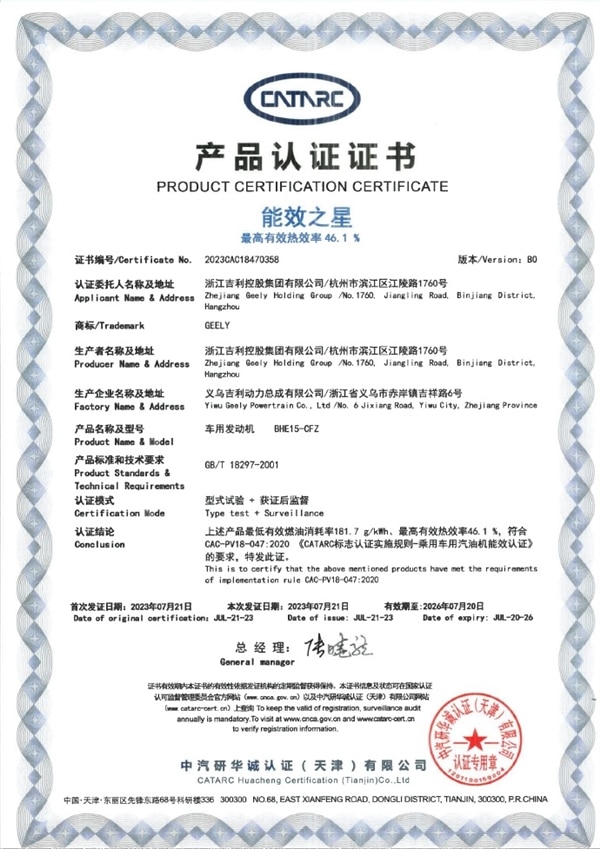Some months back we brought you news that both BYD and Geely were claiming 2,000 km range for new PHEV systems. Well, it seems that Geely is not happy with BYD claiming yesterday to have the world’s most thermally efficient engine. This has resulted in a spat between the two over who actually has the most efficient engine. Last night’s press conference for BYD’s fifth generation DM (PHEV) technology has also raised a number of other questions about the three main claims and how they are actually measured. As a reminder the three key figures are 2.9 l/100 km fuel consumption, 2,100 km range and 46.06% thermal efficiency.
– Advertisement –
BYD claimed to have the world’s most thermally efficient engine and quoted the figure of 46.06%, note the two decimal places. Geely responded to say that this is not true and that it has the most efficient engine with 46.1%, note this is to one decimal place! Geely even went as far as showing a certificate, surprisingly in both Chinese and English, from CATARC (China Automotive Technology and Research Center) to prove the figure. CATARC is a state owned institute that helps China manage the automotive industry.

A look at the certificate shows an issue date of July last year, although Geely announced the breakthrough in November 2022. However, the engine is currently not used and will make up part of the next generation NordThor PHEV system due to be released next year. The current NordThor PHEV system which launched in February last year uses a BHE15 Plus engine which has a 44.26% thermal efficiency.
– Advertisement –

BYD’s response has been “mass production, mass production, mass production.” Li Yunfei GM of the BYD Group PR department then went further saying “Don’t play virtual, release is mass production. Deliver when you go public!” Subsequently another certificate from CATARC issued in March 2024 has surfaced showing a BYD engine with 46.5% thermal efficiency. Li has responded to this saying BYD has a lot of non-mass-produced engines with higher thermal efficiency.

Further controversy has arisen over some of other key claims of BYD’s fifth generation DM technology. Firstly it seems that the 2.9 l/100 km is actually under NEDC working conditions but according to Ministry of Industry and Information Technology (MIIT) declaration list information the figure is 3.8 l/100 km. The difference is MIIT uses WLTC which consists of four parts: low-speed, medium-speed, high-speed, and ultra-high-speed. NEDC on the other hand uses four repeating urban driving cycles and one suburban driving cycle. Furthermore, the NEDC test lasts for 1,180 seconds against 1,800 for WLTC. Overall speeds, environmental considerations (temperature, humidity), loading and air conditioning usage under the WLTC test are far more indicative of real world conditions.
Similarly there is a question mark over the 2,100 kilometer comprehensive range claim. Currently there appears to be no word over how this has been measured. Was this done under CLTC conditions which would be something genuinely comparable or was it done like the Chery 2,000 km challenge earlier this year under conditions trying to maximize range as much as possible to claim the figure?
– Advertisement –
Sources: Fast Technology, Fast Technology,
